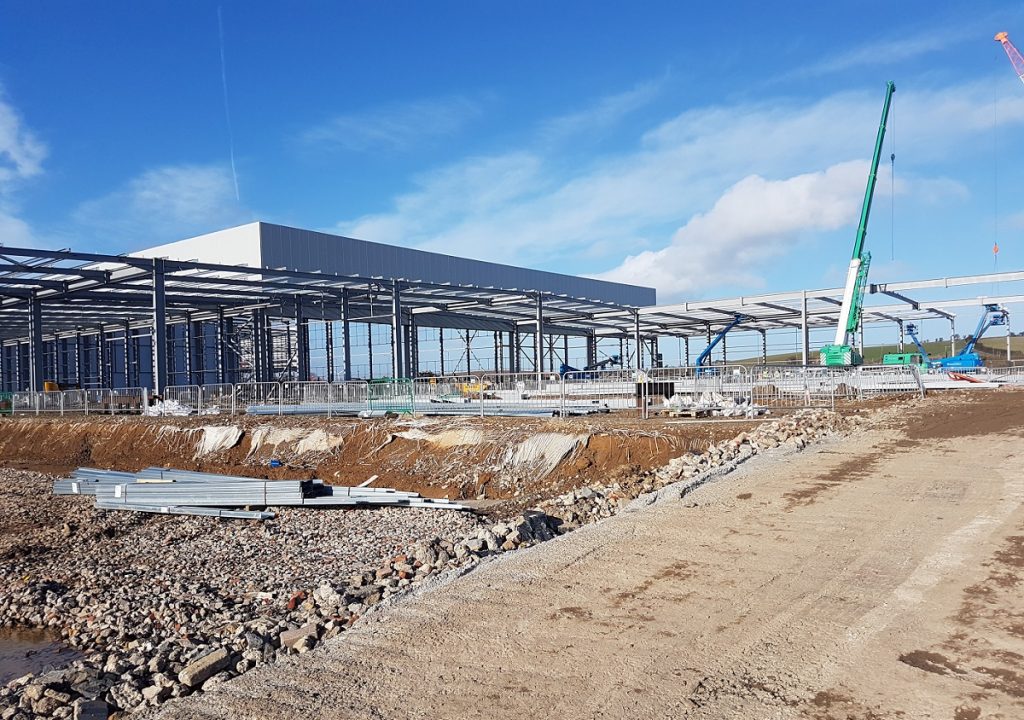New ways of working require new, or improved, infrastructure and building facilities:
There has been a sharp shift in demand for industrial and logistics space in recent months, with both distribution and warehouse facilities in high demand.
As shoppers flocked online, with sales up 40% in May compared to February, retailers needed to rapidly increase their capacity for retail distribution centres – large spaces from which retailers ship goods direct to consumers, rather than to shops.
And manufacturers and retailers alike are mitigating against any further supply chain disruptions – initially felt as shoppers ‘panic bought’ when the first lockdown hit and now being planned for as Brexit looms – by reassessing ‘just in time’ tactics alongside needs for warehouses to hold stock.
As such, across the UK 16 million square feet of logistics and industrial space was transacted in just one quarter of 2020, reaching record levels and more than double the 10-year average, according to reports by Place North West.
Leaders and commentators from across the industry see no sign of the need for these facilities slowing down – even with signs of vaccines and ‘back to normal’ on the horizon. The UK has long been regarded as ‘under-warehoused’ by leading agents like Savills.
For businesses needing new or repurposed distribution centres, ensuring the structural steelwork meets their needs is key.
Of course, space is the primary premium for most facilities – both for holding the right volume of stock and ensuring social distancing to protect workers – but so are the finer details.
For retailers of large items – stocking the household white goods, large electronic items or even furniture that consumers feeling increasingly comfortable buying online – the ability to manage crane loadings within a facility will be vital. In fact, most distribution centres or warehouses are likely to require crane loads to at least manage goods in, particularly if they are visited by dozens of wagons and artics each days.
For distributors of fast-moving consumer goods, large open spaces with flexibility to hold high volumes of, and ensure ease of access to, products, will be important, to ensure they have adequate stock levels of key items year-round.
For any type of distribution centre or warehouse, externally they will be tested by the great British weather, including wind loads, driving rain or warm temperatures.
And for food retailers, internally the facilities will require environmentally-controlled facilities to maintain ambient temperatures to protect stock.
For example, for Aldi to continue supplying food and goods across the South East of England, we supplied and installed essential steelwork to deliver a temperature-sensitive distribution centre on the Isle of Sheppey. Fabrication and installation that would allow the 14-acre warehouse to tolerate fluctuating or freezing temperatures was critical, with weld design, breakpads thickness and bolt strength and endurance all carefully considered.
At industrial parks across the UK structural steelwork has been the material of choice to provide the framing solutions for vast, multi-purpose and highly functional spaces – it has a market share of 90% for this type of build.
The use of steel allows for large, open-plan spaces critical for any warehouse or distribution centre, with hit and miss engineering allowing for vast column-free spaces. Steel is also easily adapted, added to or strengthened, should a facility later require modifications or additions.
Its cost-effectiveness and speed of erection also make it the ideal material during this boom of distribution centres being built or modified.
Alongside, understanding the various structural requirements of the building, flexibility will be key to retailers changes in strategies and approaches too. With warehouse and distribution facilities already at a premium, businesses will need to be clever in their immediate and ongoing use of space in order to manage future changes in supply or demand. While the current requirement may be for a straight distribution facility, processing orders direct to consumers, the need further down the line could be for storage only, or processing and assembly lines. Multi-functional or easily adaptable spaces will help businesses to future-proof their spaces.
As businesses move from retail or office spaces to industrial units, working with contractors who understand the various requirements and restrictions of these buildings will be key.

